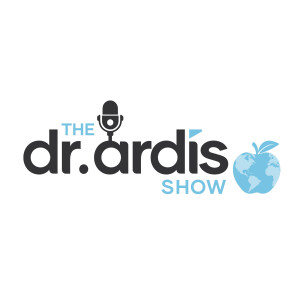

University of South Australia, July 13, 2021
According to news originating from Adelaide, Australia, by NewsRx correspondents, research stated, “Adherence to a Mediterranean diet is associated with higher cognitive function and reduced risk of dementia in Mediterranean populations. However, few studies have investigated the association between Mediterranean diet adherence and cognition in populations outside of the Mediterranean basin.”
Our news journalists obtained a quote from the research from the University of South Australia, “Furthermore, it is currently unknown whether the association between Mediterranean diet adherence and cognitive function differs between middle-aged and older individuals. Cross-sectional (n = 894) and longitudinal (n = 530) multivariable analyses were undertaken using data from community-dwelling adults from the Maine-Syracuse Longitudinal Study (MSLS). Mediterranean diet adherence was measured by applying a literature-based Mediterranean diet score to food frequency questionnaire data. Cognitive function was assessed with a battery of tests and composites scores were computed for global cognitive function, Visual-Spatial Organisation and Memory, verbal memory, working memory, scanning and tracking and abstract reasoning. No cross-sectional associations between Mediterranean diet adherence and cognitive function were detected. Over a period of five years, higher adherence to a Mediterranean diet was associated with improvements in Global Cognitive Function, Visual-Spatial Organisation and Memory and scanning and tracking in participants >= 70 years.”
According to the news editors, the research concluded: “No significant longitudinal associations were observed for participants Conclusion: Our findings suggest that higher adherence to a Mediterranean diet is associated with better cognitive performance, and therefore less cognitive decline, in older but not middle-aged individuals.”
This research has been peer-reviewed.
Coffee and veggies may protect against COVID-19
Northwestern University, July 20, 2021
Sip a venti dark roast and eat a salad. A new Northwestern Medicine study shows coffee consumption and eating lots of vegetables may offer some protection against COVID-19.
The authors believe this is the first study using population data to examine the role of specific dietary intake in prevention of COVID-19.
"A person's nutrition impacts immunity," said senior author Marilyn Cornelis, associate professor of preventive medicine at Northwestern University Feinberg School of Medicine. "And the immune system plays a key role in an individual's susceptibility and response to infectious diseases, including COVID-19."
Being breastfed may also offer protection as well as eating less processed meats, the study found.
"Besides following guidelines currently in place to slow the spread of the virus, we provide support for other relatively simple ways in which individuals can reduce their risk and that is through diet and nutrition," Cornelis said.
The paper on nutrition and COVID-19 protection was published recently in the journal Nutrients.
One or more cups of coffee per day was associated with about a 10% decrease in risk of COVID-19 compared to less than one cup per day. Consumption of at least 0.67 servings per day of vegetables (cooked or raw, excluding potatoes) was associated with a lower risk of COVID-19 infection. Processed meat consumption of as little as 0.43 servings per day was associated with a higher risk of COVID-19. Having been breastfed as a baby reduced the risk 10% compared to not having been breastfed.
While the study shows diet appears to modestly reduce disease risk, the Centers for Disease Control and Prevention recommends vaccines as the most effective way to prevent COVID-19 disease, especially severe illness and death. COVID-19 vaccines also reduce the risk of people spreading the virus that causes COVID-19.
Thus far, most COVID-19 research has focused on individual factors assessed after a positive COVID-19 test. Individuals with suppressed immune systems such as the elderly and those with existing comorbidities including cardiovascular diseases, hypertension, diabetes and obesity, are more likely to experience severe outcomes of COVID-19.
But other than weight management, less attention has focused on other modifiable risk factors preceding COVID-19 infection, said Cornelis, who studies how diet and nutrition contribute to chronic disease.
Dr. Thanh-Huyen Vu, the study's first author and a research associate professor of medicine at Northwestern, is now leading analyses to determine whether these protective diet behaviors are specific to COVID or respiratory infections more broadly.
Exact mechanisms linking these diet factors to COVID are unknown.
"Coffee is a major source of caffeine, but there are also dozens of other compounds that may potentially underlie the protective associations we observed," Cornelius said. "Associations with processed meat, but not red meat, point to non-meat factors."
Using data from the UK Biobank, researchers examined the associations between dietary behaviors measured in 2006-2010 and COVID-19 infections in March to December 2020, before vaccines were available. They focused on 1) diet factors for which data were available and previously implicated in immunity based on human and animal studies; 2) self-reported intakes of coffee, tea, vegetables, fruit, fatty fish, processed meat and red meat. An early-life exposure to breastmilk also was analyzed.
Among the 37,988 participants tested for COVID-19 and included in the study, 17% tested positive.
The observational nature of the UK Biobank research limits the extent to which mechanisms of protection can be tested, Cornelis said. However, much of her nutrition research uses genetics, and with all UK Biobank participants currently genotyped, she hopes to use this information to gain better insight into how diet and nutrition offer protection from the disease.
Institute for Functional Medicine (Seattle), July 14 2021.
The April 15, 2021 issue of Aging published the results of an eight-week randomized trial which resulted in a reduction in biologic age among men who participated in lifestyle changes and consumed nutritional supplements.
"The combined intervention program was designed to target a specific biological mechanism called DNA methylation, and in particular the DNA methylation patterns that have been identified as highly predictive of biological age,” explained lead author Kara Fitzgerald, ND. “We suspect that this focus was the reason for its remarkable impact.”
The trial included 38 men between the ages of 50 and 72 years. Eighteen participants consumed a plant-based, low carbohydrate diet that included limited nutrient-dense animal proteins. The diet was supplemented with a vegetable and fruit powder and the probiotic Lactobacillus plantarum 299v. The group was advised to participate in a minimum of 30 minutes of exercise daily and to perform breathing exercises twice per day for stress reduction.
According to the Horvath DNAmAge clock, which evaluates DNA methylation patterns as a marker of biologic age, men who participated in the lifestyle program had scores that averaged 1.96 younger at the end of the program in comparison with the beginning, while control participants scored 1.27 years older. Additionally, triglycerides were reduced in the lifestyle program group.
“To our knowledge, this is the first randomized controlled study to suggest that specific diet and lifestyle interventions may reverse Horvath DNAmAge epigenetic aging in healthy adult males,” the authors announced.
“These early results appear to be consistent with, and greatly extend, the very few existing studies that have so far examined the potential for biological age reversal,” Dr Fitzgerald commented. “And it is unique in its use of a safe, non-pharmaceutical dietary and lifestyle program, control group, and the extent of the age reduction."
Anhui Medical University (China), July 12, 2021
According to news reporting from First Affiliated Hospital of Anhui Medical University research stated, “Impaired hepatic fatty acid metabolism and persistent mitochondrial dysfunction are phenomena commonly associated with liver failure. Decreased serum levels of L-carnitine, a amino acid derivative involved in fatty-acid and energy metabolism, have been reported in severe burn patients.”
Our news editors obtained a quote from the research from First Affiliated Hospital of Anhui Medical University: “The current study aimed to evaluate the effects of L-carnitine supplementation on mitochondrial damage and other hepatocyte injuries following severe burns and the related mechanisms. Serum carnitine and other indicators of hepatocytic injury, including AST, ALT, LDH, TG, and OCT, were analyzed in severe burn patients and healthy controls. A burn model was established on the back skin of rats; thereafter, carnitine was administered, and serum levels of the above indicators were evaluated along with Oil Red O and TUNEL staining, transmission electron microscopy, and assessment of mitochondrial membrane potential and carnitine palmitoyltransferase 1 (CPT1) activity and expression levels in the liver. HepG2 cells pretreated with the CPT1 inhibitor etomoxir were treated with or without carnitine for 24 h. Next, the above indicators were examined, and apoptotic cells were analyzed via flow cytometry. High-throughput sequencing of rat liver tissues identified several differentially expressed genes (Fabp4, Acacb, Acsm5, and Pnpla3) were confirmed using RT-qPCR. Substantially decreased serum levels of carnitine and increased levels of AST, ALT, LDH, and OCT were detected in severe burn patients and the burn model rats. Accumulation of TG, evident mitochondrial shrinkage, altered mitochondrial membrane potential, decreased ketogenesis, and reduced CPT1 activity were detected in the liver tissue of the burned rats. Carnitine administration recovered CPT1 activity and improved all indicators related to cellular and fatty acid metabolism and mitochondrial injury. Inhibition of CPT1 activity with etomoxir induced hepatocyte injuries similar to those in burn patients and burned rats; carnitine supplementation restored CPT1 activity and ameliorated these injuries. The expression levels of the differentially expressed genes Fabp4, Acacb, Acsm5, and Pnpla3 in the liver tissue from burned rats and etomoxir-treated hepatocytes were also restored by treatment with exogenous carnitine.”
According to the news editors, the research concluded: “Exogenous carnitine exerts protective effects against severe burn-induced cellular, fatty-acid metabolism, and mitochondrial dysfunction of hepatocytes by restoring CPT1 activity.”
Penn State University, July 19, 2021
Adequate blood flow supplies the brain with oxygen and nutrients, but the oxygenation tends to fluctuate in a distinct, consistent manner. The root of this varied activity, though, is poorly understood.
Now, Penn State researchers have identified one cause of the fluctuations: inherent randomness in the flow rate of red blood cells through tiny blood vessels called capillaries. According to the researchers, this randomness could have potential implications for understanding the biological build-up mechanisms underlying neurodegenerative diseases, such as Alzheimer’s disease. They published their findings in PLOS Biology today.
“These oxygenation fluctuations also occur in other tissues, like muscle,” said Patrick Drew, Huck Distinguished Associate Professor of Engineering Science and Mechanics, Neurosurgery and Biomedical Engineering. “The question we had was: Are these fluctuations caused by neural activity or something else?”
The fluctuations resemble 1/f-like noise, a statistical pattern showing large fluctuations made up of many small fluctuations and naturally occurring in a variety of phenomena, from stock-market prices to river heights. The researchers investigated the fluctuations in mice due to their brains’ similarities to those of humans, according to Drew, who also serves as associate director of the Penn State Neuroscience Institute.
First, the researchers monitored the blood flow, oxygenation and electrical signals produced by brain activity—the first time the latter two had been tracked simultaneously, according to Drew—in awake mice. They collected the data as mice moved on a spherical treadmill for up to 40 minutes at a time.
Next, to investigate the relationship between brain activity and oxygenation fluctuations, the researchers used pharmacological compounds to temporarily and reversibly silence neural signals in the mice’s brains. Despite the silencing, the fluctuations continued, showing little correlation between neural activity and oxygenation.
The passage of red blood cells, however, told a different story. Using two-photon laser scanning microscopy, an imaging technique used to visualize cells deep inside living tissue, the researchers could visualize the passage of individual red blood cells through capillaries.
“It’s like traffic,” Drew said. “Sometimes there are a lot of cars going by, and the traffic gets plugged up, and sometimes there aren’t. And red blood cells go either way when they approach a junction, so this random flow can lead to bottlenecks and stalls in the vessel.”
Importing experimental data into a statistical model allowed the researchers to run further simulations and make inferences based on massive amounts of data produced by the model. The researchers discovered that these random red blood cell stoppages contributed to the fluctuations in oxygenation, further supporting a relationship between the flow of red blood cells through capillaries and the tiny changes in oxygenation that formed larger trends.
Better understanding the regulation of blood flow and subsequent transport of oxygen can help researchers improve medical technology and explore causes of diseases such as Alzheimer’s, according to Drew. While the researchers identified the link between red blood cell transport and oxygenation, further research is needed to investigate additional contributors to oxygenation fluctuations that could play a role in neurodegenerative diseases.
Kyle Gheres, a graduate student in the intercollege Graduate Program in Molecular Cellular and Integrative Biosciences, also contributed to this paper. Qingguang Zhang, assistant research professor of engineering science and mechanics, served as first author on the paper. This work was supported by the National Institutes of Health.
Chonbuk National University School of Medicine (S Korea), July 21, 2021
Findings on Breast Cancer Reported by Researchers at Chonbuk National University School of Medicine(Epigallocatechin gallate inhibits the growth of MDA-MB-231 breast cancer cells via inactivation of the b-catenin signaling pathway)
According to news reporting originating in Chonbuk, South Korea, research stated, "Epigallocatechin gallate (EGCG), a major constituent of green tea, has potential as a treatment for a variety of diseases, including cancer. EGCG induces apoptosis and inhibits tumorigenesis through multiple signaling pathways in breast cancer cells. b-catenin signaling modulators could be useful in the prevention and therapy of breast cancer."
The news reporters obtained a quote from the research from the Chonbuk National University School of Medicine, "However, the precise anticancer effect of EGCG through the b-catenin signaling pathway in breast cancer is unclear. The present study investigated the association between b-catenin expression and clinicopathological factors of breast cancer patients, and the effect of EGCG on b-catenin expression in breast cancer cells. b-catenin expression was analyzed according to the clinicopathological factors of 74 patients with breast cancer. All patients were females diagnosed with invasive ductal carcinoma. Western blot analysis revealed that b-catenin was expressed at higher levels in breast cancer tissue than in normal tissue. b-catenin expression was associated with lymph node metastasis (p=0.04), tumor-node-metastasis stage (p=0.03) and estrogen receptor status (p
More Episodes
All Episodes>>You may also like
Create Your Podcast In Minutes
- Full-featured podcast site
- Unlimited storage and bandwidth
- Comprehensive podcast stats
- Distribute to Apple Podcasts, Spotify, and more
- Make money with your podcast
- Privacy Policy
- Cookie Policy
- Terms of Use
- Consent Preferences
- Copyright © 2015-2025 Podbean.com












